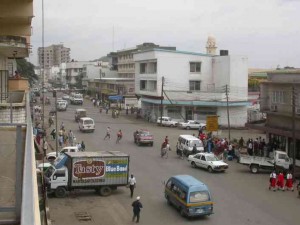Tanzania will host the African Green Revolution Forum (AGRF)) from September 26 to 28, 2012, the country’s Minister of Agriculture, Food and Cooperatives, Christopher Chiza, and President of the Alliance for a Green Revolution in Africa (AGRA), Jane Karuku, have disclosed.

The meeting is said to be the next milestone in developing African-led food security solutions.
At the recent G8 Summit, global leaders including 21 African countries and 27 private sector companies committed $3 billion to a New Alliance for Food Security and Nutrition, launching the next phase of the global food security effort to raise 50 million people out of poverty over the next 10 years.
The AGRF 2012 sets the stage for Africa’s leaders to drive the initiative by promoting investments and policy support to increase agricultural productivity and income growth for African farmers. During the forum, hosted at Arusha’s Ngurdoto Mountain Lodge, global leaders will tackle leadership policy, revolutionizing African agricultural finance models, strengthening markets, and transforming African agriculture through innovative partnerships.
“Tanzania has long known farming is at the centre of our economy,” said Minister Chiza. “We are pleased to welcome leaders from across the continent and around the world to find new ways to scale the success we’ve seen in our own agricultural breadbasket.”
As the host nation, Tanzania’s recent agricultural growth represents a case study of what is possible. In the Kilombero District of Morogoro, the yields for maize have recently increased for some smallholder farmers from 1.5 to 4.5 tons per hectare; the yields for rice have increased from 2.5 to 6.5 tons per hectare.
“The goal of the government is to transform Tanzania into a middle-income country by 2025, fuelled, in a significant part, by growth in its agricultural sector,” Chiza added.
The forum brings together African Heads of State, ministers, private agribusiness firms, financial institutions, farmers, NGOs, civil society organizations and scientists to discuss and develop concrete investment plans for scaling agricultural development success in Africa. Tanzania will welcome notable guests including Bill & Melinda Gates Foundation Co-Chair Melinda Gates, IFAD President Dr. Kanayo Nwanze, Nigerian Minister of Agriculture the Dr. Akinwumi Adesina, World Food Prize Laureate Prof. Gebisa Ejeta, and Yara International President & CEO Jørgen Ole Haslestad.
Following recent discussions at WEF Africa, the G8 and David Cameron’s Hunger Summit, the African Green Revolution Forum will continue to look for ways to unite the power of the public- and private-sectors in the global food security efforts.
“Public- and private-sector leaders are joining forces in unprecedented ways to ensure a more food secure future,” said Yara President and Chief Executive Officer, and co-chair of the forum, Mr. Jørgen Ole Haslestad. “We have seen great success when players come together and invest strategically – we hope to build on new momentum and work together to transform agriculture in Africa.”
The forum will remain focused on unlocking Africa’s agricultural potential by empowering smallholder farmers across the continent. By collaborating with farmer’s organisations, civil society and other partners, the discussion will explore new ways to provide resources, overcome challenges and improve yields for the millions of farmers who are working less than two hectares of land across the continent.
“Smallholder farmers are at the centre of all we do,” said AGRA President Jane Karuku. “Our approach is clear and proven – if we provide African farmers the tools they need to grow more and improve their incomes, they will help lead us all into a more prosperous future.”










